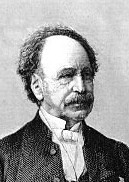William Knollys (British Army officer)
Sir William Knollys | |
|---|---|
 Gen. Sir William Knollys | |
| Born | 1 August 1797 |
| Died | 23 June 1883 (aged 85) |
| Allegiance | |
| Service | |
| Rank | General |
| Commands | Guernsey Aldershot Division |
| Battles / wars | Peninsular War |
| Awards | Knight Commander of the Order of the Bath |
General Sir William Thomas Knollys KCB PC (1 August 1797 – 23 June 1883) was a British Army officer who reached high office in the 1860s.


Military career
[edit]Born into the Knollys family, he was the son of General William Woods Knollys and Charlotte Martha Blackwell.[1] He was educated at Harrow School and the Royal Military Academy Sandhurst. He was styled Viscount Wallingford until 1813, when his father's claim to the Earldom of Banbury was rejected.[1]
Knollys was commissioned into the 3rd Foot Guards in 1813 and fought in the Peninsular War later that year.[1] In 1854 he was appointed Lieutenant Governor of Guernsey and then in 1855 he became the first General Officer Commanding Aldershot Division and was allocated the task of organising his troops into Divisions and Brigades.[1] Having achieved this task he was made President of the Council of Military Education in 1861.[1]
He held the colonelcy of the 62nd (Wiltshire) Regiment of Foot from 1858 until its amalgamation into the Duke of Edinburgh's (Wiltshire Regiment) in 1881, after which he was Colonel of the 1st Battalion of the new Regiment. He transferred as Colonel to the Scots Guards in 1883 but died later the same year.[2]
In 1862 he was appointed Treasurer and Comptroller to the Household of Prince of Wales, later King Edward VII.[1] He was sworn in as Privy Counsellor in 1872 and in 1877 made Gentleman Usher of the Black Rod.[1]
He was promoted to full General on 17 June 1866 and made a Knight Commander of the Order of the Bath (KCB) in 1867.[1]
After his death in 1883 at the House of Lords he was buried at Highgate Cemetery (east side).[3]
Family
[edit]In 1830 he married Elizabeth St Aubyn, daughter of Sir John St Aubyn, 5th Baronet, and together they went on to have five sons and three daughters.[1]
One of his sons, Francis Knollys, 1st Viscount Knollys (1837–1924), was private secretary to Edward VII and George V and created Baron Knollys in 1902 and Viscount Knollys in 1911.[4] Another son, Sir Henry Knollys (1840–1930), became private secretary to King Edward's daughter Maud, Queen of Norway.[5]
References
[edit]- ^ a b c d e f g h i Sir William Knollys at Oxford Dictionary of National Biography
- ^ "Regiments and Corps..." regiments.ord. Archived from the original on 12 December 2006. Retrieved 22 July 2016.
{{cite web}}: CS1 maint: bot: original URL status unknown (link) - ^ . Dictionary of National Biography – via Wikisource.
- ^ Roderick R. McLean. "Knollys, Francis, first Viscount Knollys (1837–1924)". Oxford Dictionary of National Biography (online ed.). Oxford University Press. doi:10.1093/ref:odnb/34351. (Subscription or UK public library membership required.)
- ^ KNOLLYS, Colonel Sir Henry', Who Was Who, A & C Black, an imprint of Bloomsbury Publishing plc, 1920–2008; online edn, Oxford University Press, Dec 2007
- 1797 births
- 1883 deaths
- People educated at Harrow School
- Graduates of the Royal Military College, Sandhurst
- British Army generals
- Scots Guards officers
- British Army personnel of the Napoleonic Wars
- Ushers of the Black Rod
- Burials at Highgate Cemetery
- Knights Commander of the Order of the Bath
- Members of the Privy Council of the United Kingdom
- Grooms of the Stool
- Knollys family
